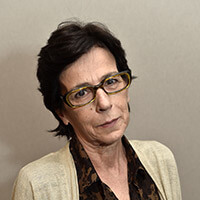When the quartz revolution began in the 1960s, Girard-Perregaux took the decision to launch its own research programme. Unlike the Swiss watchmakers that were joining forces with the Swiss watchmaking research laboratory (Laboratoire Suisse de Recherche Horlogère) then, from 1962, the centre for watch electronics (Centre Electronique Horloger), the La Chaux-de-Fonds firm was determined to go it alone and develop, in complete independence, its own quartz calibre. In 1966 it set up its Electronic Research Division whose remit was to build a master clock, a small clock then a wristwatch, all driven by quartz. The latter, named Elcron, was unveiled at the Basel watch fair in 1970, alongside the CEH’s watches, equipped with the Beta 21 movement. A year later and Girard-Perregaux launched a new model, this time with a quartz oscillating at a frequency of 32,768 Hz, since adopted as the industry standard. With an error of rate of just one minute per year, the GP350 sailed through the Neuchâtel Observatory chronometry tests. More than 20,000 pieces would be produced.
A complete range
In 2010, Girard-Perregaux commemorates the 40th anniversary of its first quartz movement with the GP13500, an 11½”’ calibre with hours, minutes, seconds and date. The Manufacture now boasts four different-sized quartz movements. The brand is committed to developing a complete portfolio, and has worked intensively towards this goal for twenty years. In addition to its quartz movements, Girard-Perregaux has an extensive catalogue of Fine Watch movements and self-winding movements. It is heir to almost 80 patents, filed throughout its history, beginning with the patent for the legendary Tourbillon under three gold bridges, obtained in 1884.
In 1991 it made its debut in a wristwatch then, in 1999, as a self-winding version with a patented platinum micro-rotor. Alongside its tourbillons, the Manufacture produces a wide range of complication movements, in particular perpetual calendars, annual calendars, minute-repeaters, chronographs and world time. Taken as a whole, complications account for 80% of its production. The Manufacture’s rich heritage by no means excludes a modern outlook, and so it has also developed a range of four self-winding movements with varying diameters, destined for all types of watch. These are the GP2700 (19.4mm), GP3200 (23.9mm), GP3300 (26.2mm) and GP4500 (30.6 mm).
The anniversary watch
The new quartz movement, developed as a tribute to one of Girard-Perregaux’s greatest innovations, equips a specially redesigned Laureato model: the original Laureato was created in 1975. Resolutely sporting in style with its octagonal bezel and integrated bracelet, it broke with classic watch design. It has undergone several transformations since then. This 35th anniversary interpretation adopts a finely-honed, delicately curved profile. The grey dial sports a chequerboard pattern with the inscription “32 768 Hz” in reference to the movement’s frequency. The Côtes de Genève decoration is visible through the back of the steel case. The Laureato is manufactured as a limited edition of forty.
















